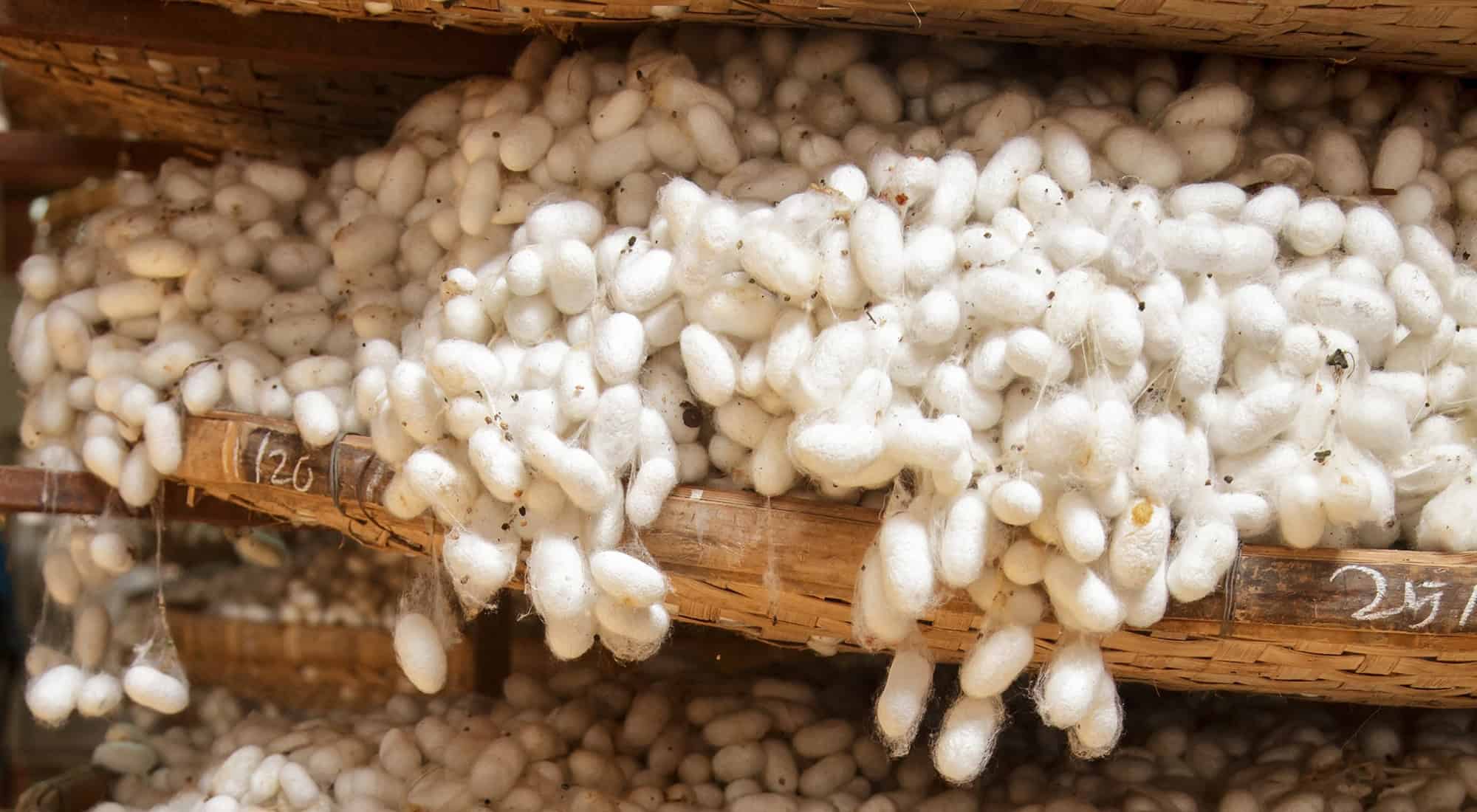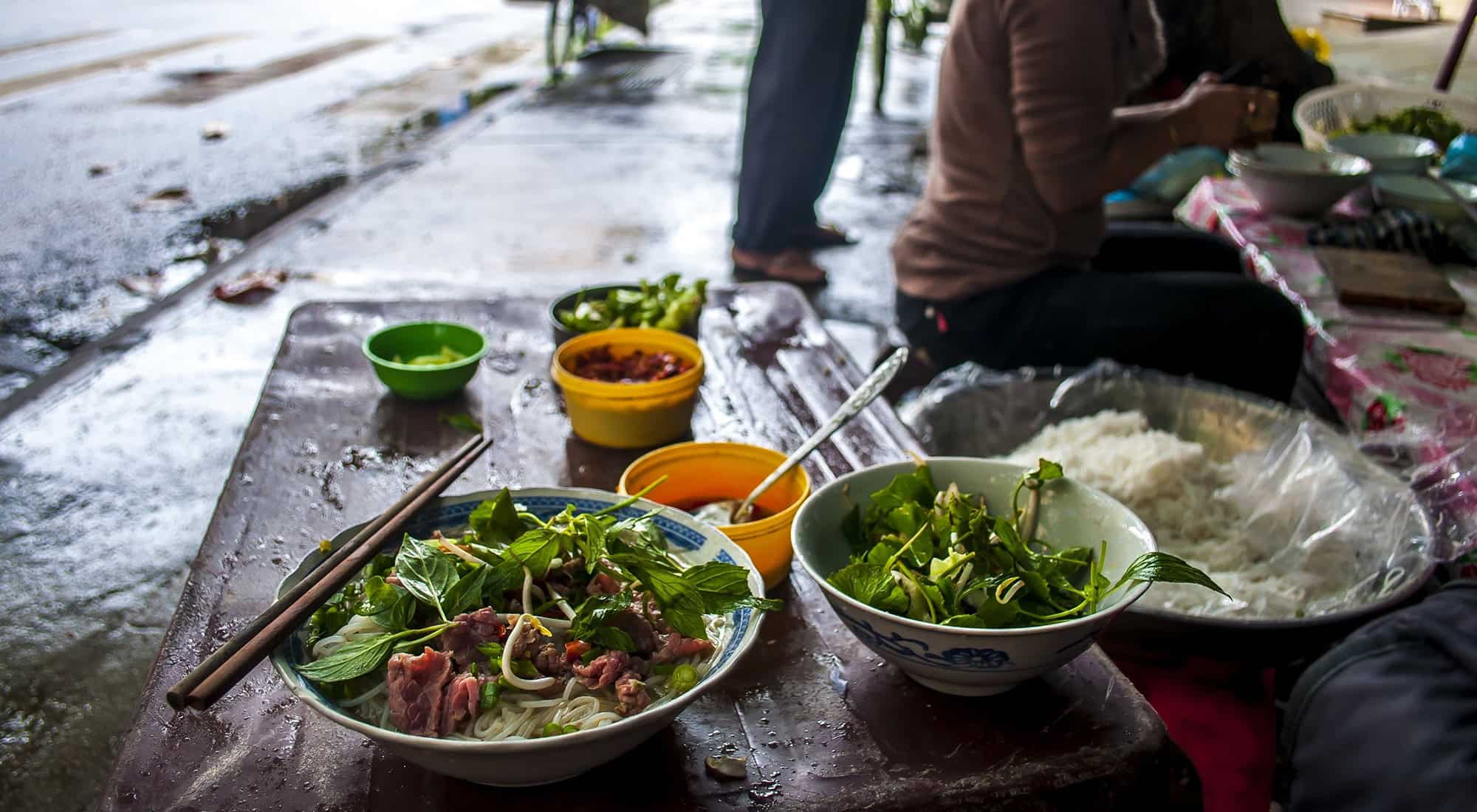Sericulture was introduced to Vietnam from China more than 1000 years ago, where the process had remained secret for years. Today Vietnam cultivates 20,000 ha of mulberry bushes which yield 1500-1800 tons of silk, around 1.8% of world output.
More recently, silk-making was developed in North Vietnam during Chinese rule and in 1975, on reunification, it was brought to Dalat. Silkworm larvae are fed mulberry leaves for about a month. They are then ready to construct their cocoons when they start rejecting food. For three days they secrete a sticky substance that binds a 750-m-long fibre into a cocoon. On completion the cocoon is plunged into boiling water to soften the thread and kill the caterpillars. Single threads are too weak and so the thread of 10 cocoons is spun into one yarn used to weave the silk. The caterpillars are then fried and eaten as a delicacy.










